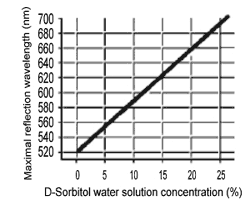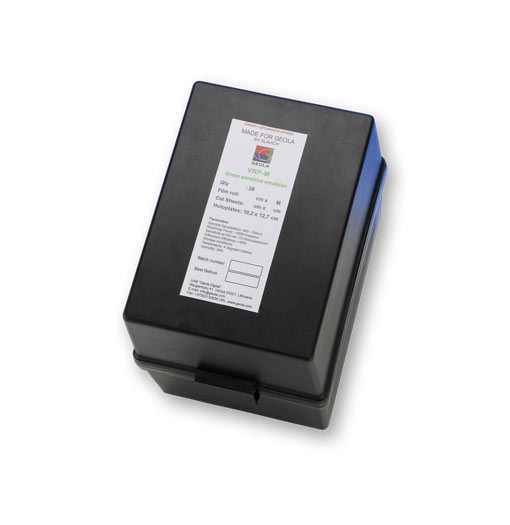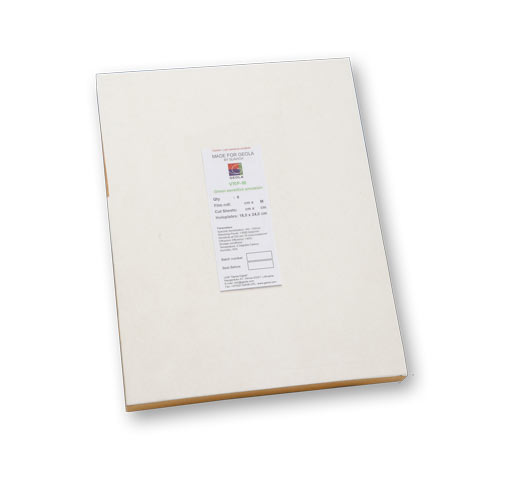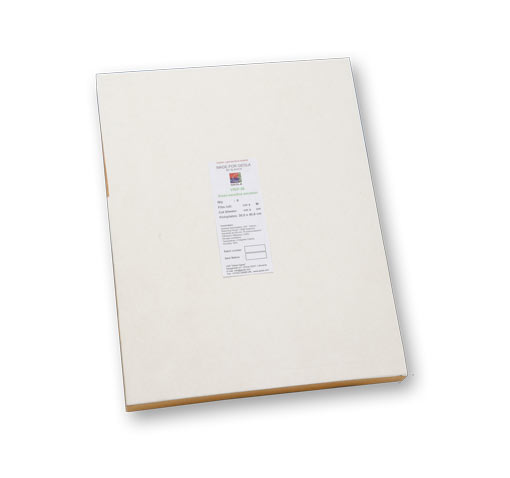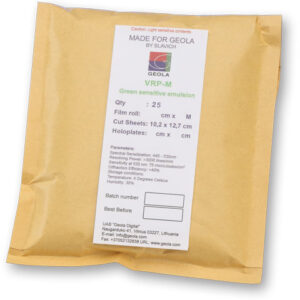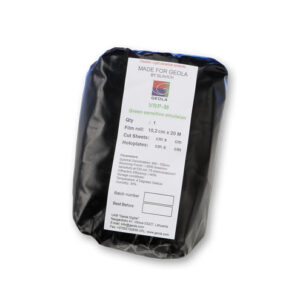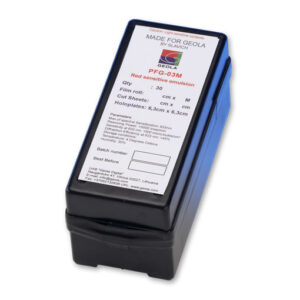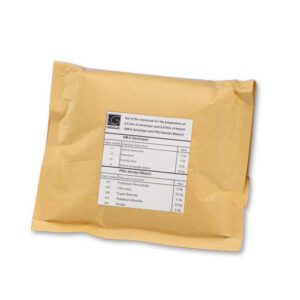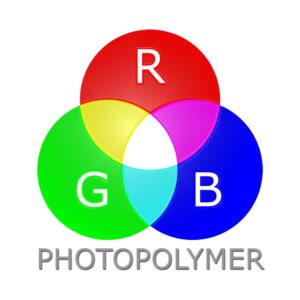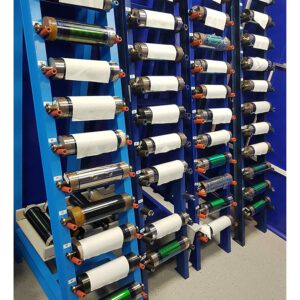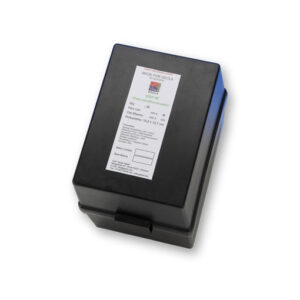Description
This Silver Halide photomaterial is used in embossed holography (origination), as well as in art holography (one or two steps holograms recording). Resolution: more than 3000 lines/millimeter.
The largest plate size available as a standard size is 406×300 mm.
Custom glass and film substrates sizes are available for the coating on request.
Guaranteed material lifetime – 12 months.
White-light holograms made on VRP-M have a natural green reconstruction colour that can be easily changed by the technique of colour -shifting using D-Sorbitol (described below).
Characteristic curve of green sensitive VRP-M emulsions, showing spectral sensitivity versus wavelength, is shown in Fig.1. As it is seen from the curve – VRP-M works well in the green and in deep blue regions of spectrum, showing the peak at approximately 75 microJoule/cm2 (~532 nm).
Fig.2 shows the optical density after VRP-M exposure by CW radiation and after development versus energy. Grain size is shown in Fig.3. The diffraction efficiency versus exposure for reflection holograms recorded on VRP-M (using a pulsed laser) is presented in Fig.4. The maximum diffraction efficiency is seen to be >45%.
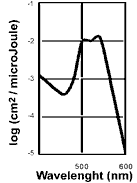
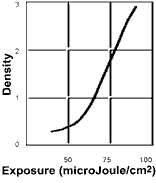
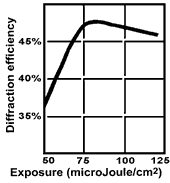
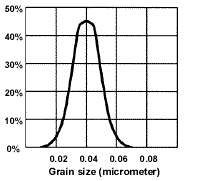
Processing and handling recommendations
- Unseal and process in indirect non-actinic light with use of a dark-red light filter (transmission zone 600 nm and more).
- Temperature of processing solutions – 20°C.
- Storage condition: Humidity 65% and 12-15deg. Celsius.
Recommended Chemical set of SM-6 developer and PBU-Amidol bleach can be obtained from our web shop.
Recommended VRP-M processing
| Procedure | Embossed holograms originating with 440-442nm lasers | Pulsed Radiation with 532nm laser | CW Radiation with 532nm laser |
| Exposure: (calculate your own) | ~200 μJ/cm2 | ~70 μJ/cm2 | ~100 μJ/cm2 |
| Development | SM-6, 3 min. (or till density 1.5-2) | SM-6, 2 min. (or till density 1.5-2) | SM-6, 2 min. (or till density 1.5-2) |
| Wash | Water, 2 min. | Water, 2 min. | Water, 2 min. |
| Bleach | PBU-Amidol until clear (~2-3 min) plus 2 min. | PBU-Amidol until clear (~2-3 min.) plus 2 min. | PBU-Amidol until clear (~2-3 min.) plus 2 min. |
| Wash | Water 5 min. | Water 5 min. | Water 5 min. |
| Final Wash | – | Water with wetting agent (Agepon) 1 min. | Water with wetting agent (Agepon) 1 min. |
| Drying | 50% Propanol 3 min. | Slow Air | Slow Air |
| Drying | Slow Air | – | – |
All material performances given above are guaranteed only for the use with the recommended chemistry.
For the conventional CW holography one, on own risk, may also use the standard Kodak D-19 developer (3 min.) and Sulfuric- Potassium dichromate bleach (2-3min. : 30ml sulfuric acid + 5gm potassium dichromate + 1 liter of water).
Colour control
Adjustable colour shifting is accomplished by soaking the hologram for 1 minute in an aqueous solution of D-Sorbitol (sugar substitute – C6H14O6) or usual Sugar powder, with added wetting agent. The colour of the final hologram depends on the solution concentration (Fig.5).
After soaking, the film must be taken out and put onto a flat surface. Water drops must be removed using a rubber wiper such as a windscreen wiper. Here one must be delicate – if too much force is employed you may obtain a somewhat different colour than that predicted by Fig. 5. If, after drying of the hologram, the replay colour achieved is not satisfactory, the film or plate may be washed in warm water and then soaked anew in another D-Sorbitol solution of different concentration.
